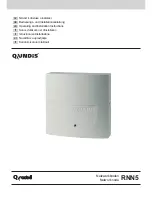
358
Configuring Optional Spanning-Tree Features
Information About Configuring the Optional Spanning-Tree Features
BackboneFast
BackboneFast detects indirect failures in the core of the backbone. BackboneFast is a complementary technology to the
UplinkFast feature, which responds to failures on links directly connected to access switches. BackboneFast optimizes
the maximum-age timer, which controls the amount of time the switch stores protocol information received on an
interface. When a switch receives an inferior BPDU from the designated port of another switch, the BPDU is a signal that
the other switch might have lost its path to the root, and BackboneFast tries to find an alternate path to the root.
BackboneFast, which is enabled by using the
spanning-tree backbonefast
global configuration command, starts when
a root port or blocked interface on a switch receives inferior BPDUs from its designated switch. An inferior BPDU
identifies a switch that declares itself as both the root bridge and the designated switch. When a switch receives an
inferior BPDU, it means that a link to which the switch is not directly connected (an
indirect
link) has failed (that is, the
designated switch has lost its connection to the root switch). Under spanning-tree rules, the switch ignores inferior
BPDUs for the configured maximum aging time specified by the
spanning-tree vlan
vlan-id max-age
global
configuration command.
The switch tries to find if it has an alternate path to the root switch. If the inferior BPDU arrives on a blocked interface,
the root port and other blocked interfaces on the switch become alternate paths to the root switch. (Self-looped ports
are not considered alternate paths to the root switch.) If the inferior BPDU arrives on the root port, all blocked interfaces
become alternate paths to the root switch. If the inferior BPDU arrives on the root port and there are no blocked
interfaces, the switch assumes that it has lost connectivity to the root switch, causes the maximum aging time on the
root port to expire, and becomes the root switch according to normal spanning-tree rules.
If the switch has alternate paths to the root switch, it uses these alternate paths to send a root link query (RLQ) request.
The switch sends the RLQ request on all alternate paths and waits for an RLQ reply from other switches in the network.
If the switch discovers that it still has an alternate path to the root, it expires the maximum aging time on the interface
that received the inferior BPDU. If all the alternate paths to the root switch indicate that the switch has lost connectivity
to the root switch, the switch expires the maximum aging time on the interface that received the RLQ reply. If one or more
alternate paths can still connect to the root switch, the switch makes all interfaces on which it received an inferior BPDU
its designated ports and moves them from the blocking state (if they were in the blocking state), through the listening
and learning states, and into the forwarding state.
shows an example topology with no link failures. Switch A, the root switch, connects directly to
Switch B over link L1 and to Switch C over link L2. The Layer 2 interface on Switch C that connects directly to Switch B
is in the blocking state.
Figure 48
BackboneFast Example Before Indirect Link Failure
If link L1 fails as shown in
, Switch C cannot detect this failure because it is not connected directly
to link L1. However, because Switch B is directly connected to the root switch over L1, it detects the failure, elects itself
the root, and begins sending BPDUs to Switch C, identifying itself as the root. When Switch C receives the inferior BPDUs
from Switch B, Switch C assumes that an indirect failure has occurred. At that point, BackboneFast allows the blocked
interface on Switch C to move immediately to the listening state without waiting for the maximum aging time for the
interface to expire. BackboneFast then transitions the Layer 2 interface on Switch C to the forwarding state, providing a
path from Switch B to Switch A. The root-switch election
takes approximately 30 seconds, twice the Forward Delay time
L1
L2
L3
Switch C
Switch A
(Root)
Switch B
Blocked port
44963
Содержание IE 4000
Страница 12: ...8 Configuration Overview Default Settings After Initial Switch Configuration ...
Страница 52: ...48 Configuring Interfaces Monitoring and Maintaining the Interfaces ...
Страница 108: ...104 Configuring Switch Clusters Additional References ...
Страница 128: ...124 Performing Switch Administration Additional References ...
Страница 130: ...126 Configuring PTP ...
Страница 140: ...136 Configuring CIP Additional References ...
Страница 146: ...142 Configuring SDM Templates Configuration Examples for Configuring SDM Templates ...
Страница 192: ...188 Configuring Switch Based Authentication Additional References ...
Страница 244: ...240 Configuring IEEE 802 1x Port Based Authentication Additional References ...
Страница 274: ...270 Configuring SGT Exchange Protocol over TCP SXP and Layer 3 Transport Configuring Cisco TrustSec Caching ...
Страница 298: ...294 Configuring VLANs Additional References ...
Страница 336: ...332 Configuring STP Additional References ...
Страница 408: ...404 Configuring DHCP Additional References ...
Страница 450: ...446 Configuring IGMP Snooping and MVR Additional References ...
Страница 490: ...486 Configuring SPAN and RSPAN Additional References ...
Страница 502: ...498 Configuring Layer 2 NAT ...
Страница 559: ...555 Configuring Network Security with ACLs How to Configure Network Security with ACLs Creating a Numbered Extended ACL ...
Страница 770: ...766 Configuring IPv6 MLD Snooping Related Documents ...
Страница 930: ...926 Configuring IP Unicast Routing Related Documents ...
Страница 956: ...952 Configuring IPv6 Unicast Routing Configuring IPv6 network 2010 AB8 2 48 network 2010 AB8 3 48 exit address family ...
Страница 976: ...972 Configuring Cisco IOS IP SLAs Operations Additional References ...
Страница 978: ...974 Dying Gasp ...
Страница 990: ...986 Configuring Enhanced Object Tracking Monitoring Enhanced Object Tracking ...
Страница 994: ...990 Configuring MODBUS TCP Displaying MODBUS TCP Information ...
Страница 996: ...992 Ethernet CFM ...
Страница 1030: ...1026 Working with the Cisco IOS File System Configuration Files and Software Images Working with Software Images ...
Страница 1066: ...1062 Using an SD Card SD Card Alarms ...
















































